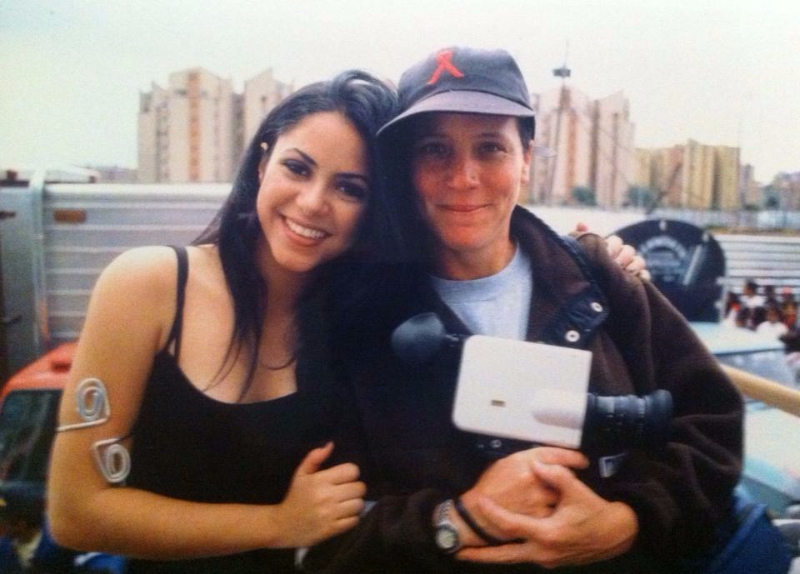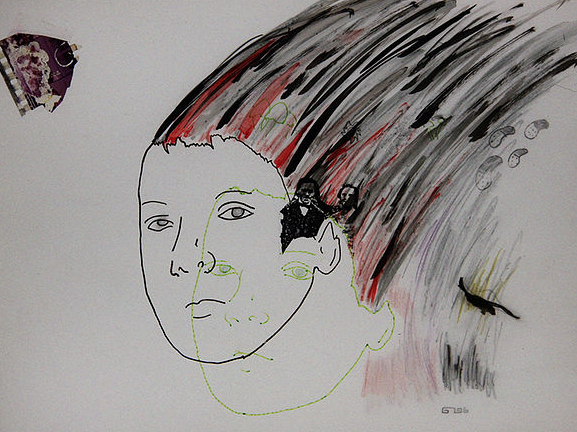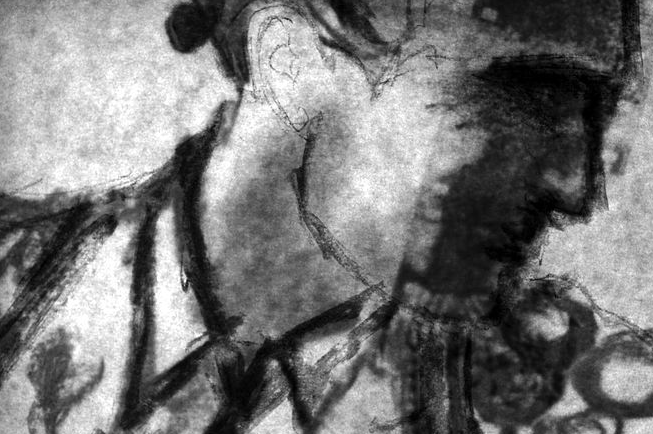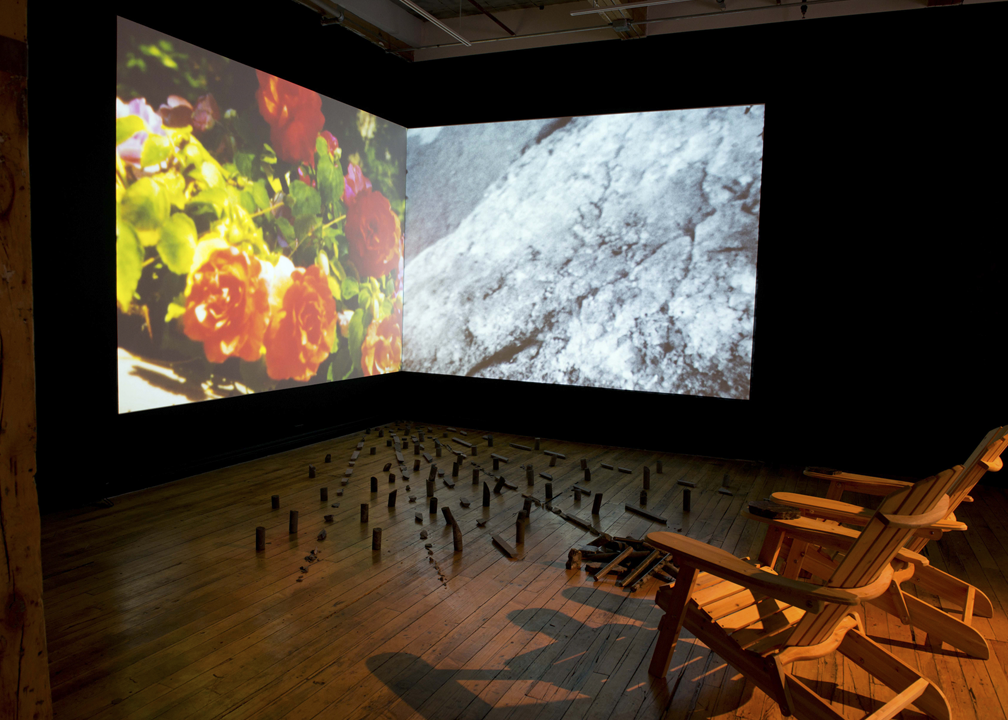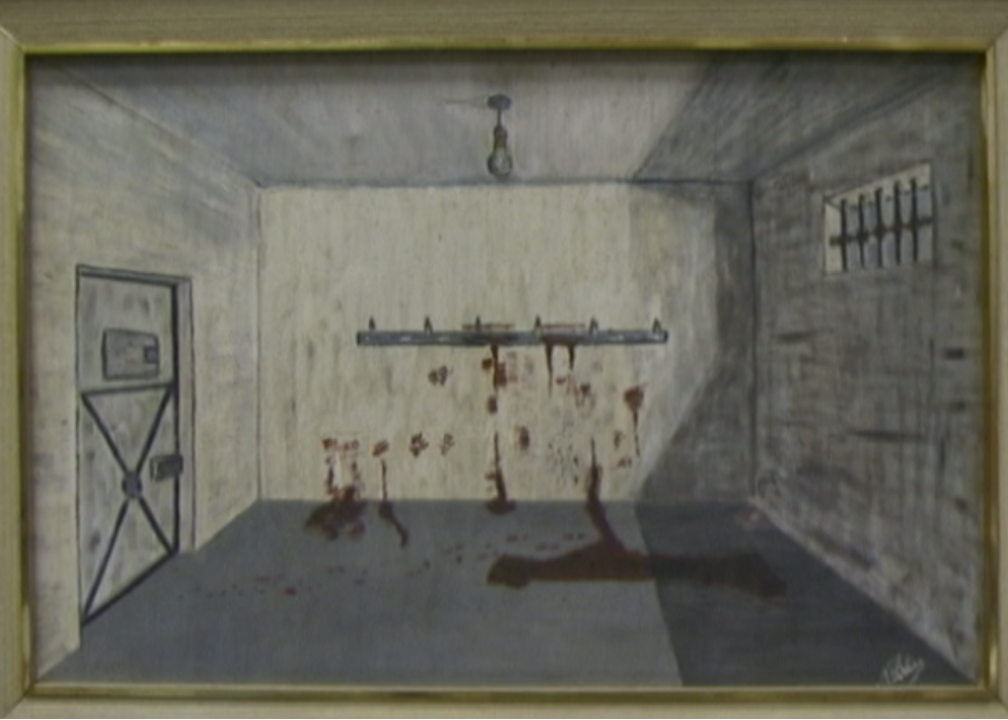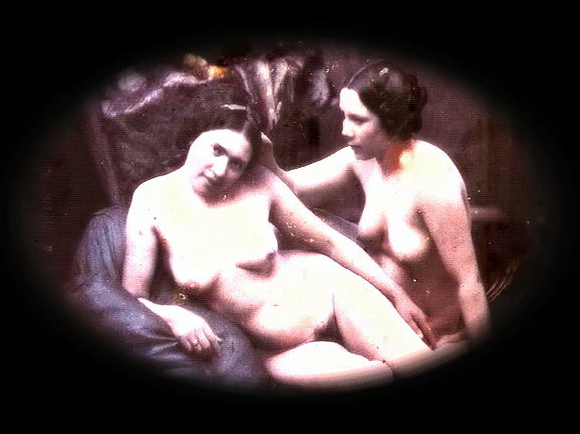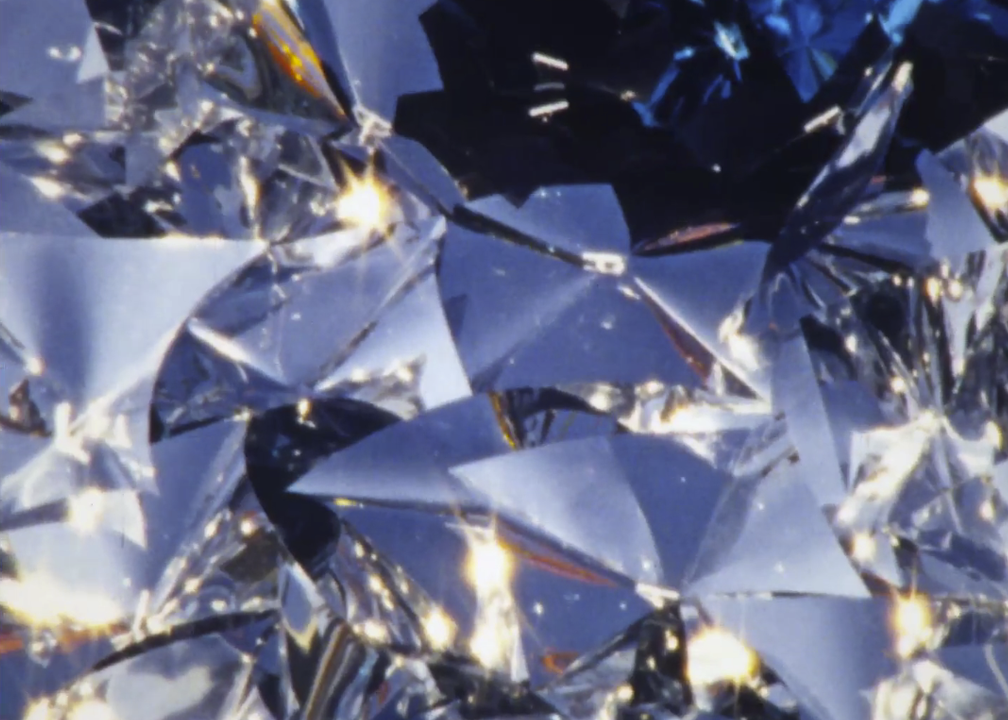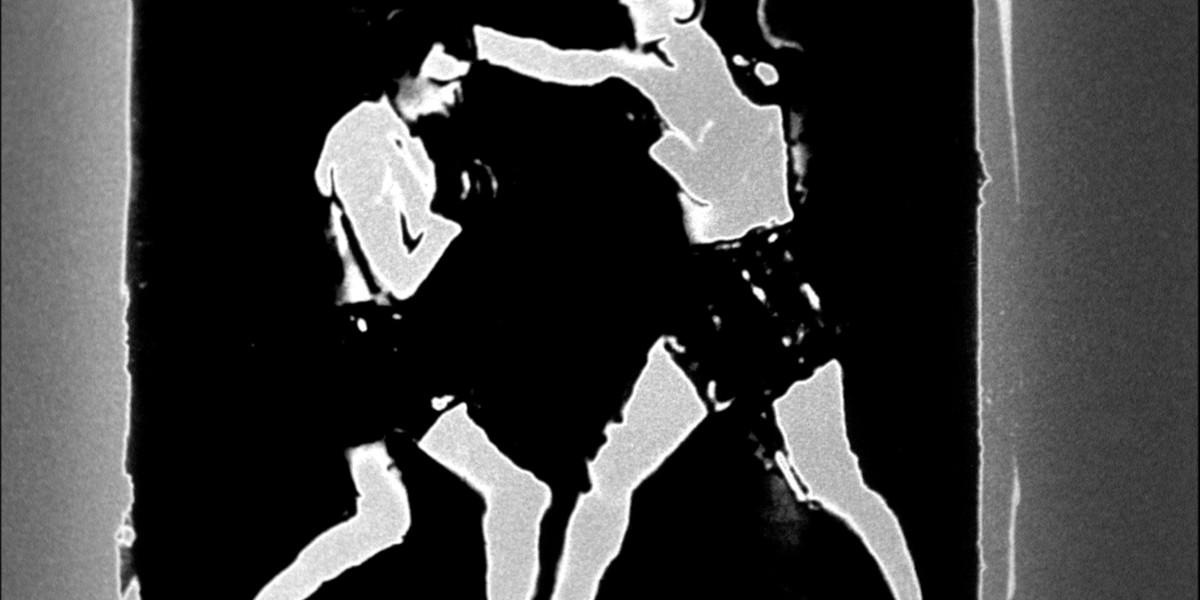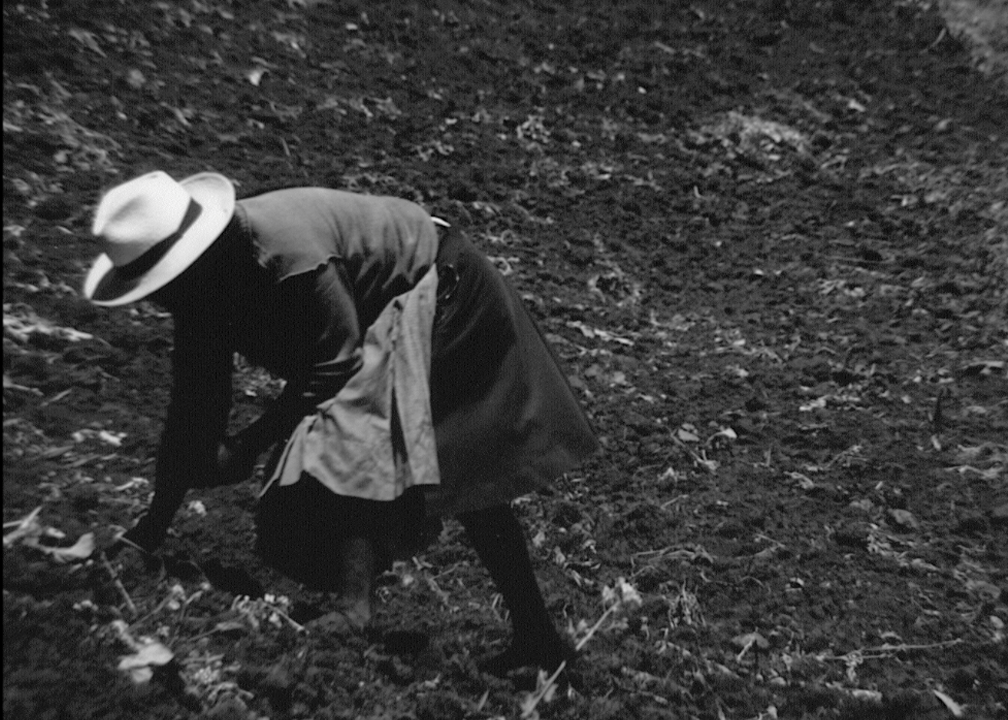Shock, Fear and Belief: The Films and Videos of Madi Piller
Originally presented by Pleasure Dome at Cinecycle, Dec. 3, 2016. Programmed by Clint Enns and Mike Hoolboom.
Madi Piller has worked diligently and with a great appetite for the past fifteen years,
working up her hybrid chops, mix-mastering a rigorous, emulsion-based formalism with a commitment to process and the joys of seeing. She was one of the first Super 8 filmmakers in Colombia, and tonight’s program will open with a glimpse of her earliest work, and the phenom who called herself Shakira. When Piller moved to Canada she raised the flag for animation, and made a brace of shorts that feature sometimes harrowing political recollections, carefully reworked, run through generations of frame by frame laser printings or else hand-painted frames, shuttling between film formats, working to find the feeling tone of recollection. The centerpiece of this retrospective is the world premiere of her new trilogy, a landscape of memory shot in her native Peru, where she reanimates the grounds of her seeing in a materialist rapture.
Shakira Music Video, 1981, 1 minute, DV
Still working as a producer in Colombia’s elite ad agency, Madi takes to the streets with her super 8 camera, bringing a different kind of spirit to the staged proceedings.
Vive Le Film, 2:13 minutes, 2006, 35mm
A joyous animated celebration of the machines of film-on-film, this large-gauge short was made as part of LIFT’s twenty-fifth-anniversary program Film is Dead! Long Live Film! It turns around a photograph of the artist’s Romanian grandparents, taken at a more secure moment, their 1927 engagement party. Two decades later, following the Second World War, her grandparents would be the only ones left alive. Sound by Madi Piller and Eduardo Gonzalez.
Animated Self-Portraits/Autoportraits Animés, 8:49 minutes, 2012, 35mm
Can a movie also be a community? This labour of love brings together no less than eighty-four Canadian animators of all stripes – from Michael Snow to the maestros at the National Film Board. Each was asked to provide twelve drawings of themselves which Madi animated on a special 35mm rig. A joyous compendium of outsiders, of barely contained rage and good humour. Music by John Halfpenny. Mix by Eric Culp and Alan deGraaf. Sound design by Joseph Doane.
Toro Bravo, 3:40 minutes, 2007, 35mm
A circus of bloodshed. This movie was made on a digital still camera (Canon D20), and then blown up to 35mm, all edited in camera. Here the filmmaker replays bullfights she recalls as a child in Peru, some shot by her father in the 1970s and then rotoscoped. Dark mining sand was used to lend emotional heft, along with charcoal drawings, cut-outs, and photocopies. The red blood was made by using plasticine on paper.
7200 Frames Under The Sun, 3:20 minutes, 2011, dual projection, Super 8 -> DV
The film is comprised of two super 8 films, each fifty feet, created in camera. One film animates the landscape with methodical incremental movements that flash rapidly changing images, offering the flora of northern Ontario. The second film focuses a lingering lens on outcroppings of solid rock exposing fossil-like imagery and sensual shapes that visually insinuate their primal connection to the advance and retreat of the glaciers that were central to their formation. An intriguing soundtrack of experimental music, composed by John Halfpenny, pulsates throughout with a reverberating fusion of dense electronic tones, including some that bring to mind the sound of whales, which might be interpreted as a reminder that the shield was once completely submerged under ancient waters.
Commissioned by LIFT for their thirtieth anniversary. The sound was added when transferred to video for their screening. The digital version has been adapted for installation and presented at WARC gallery as solo exhibition that included John Halfpenny’s soundtrack.
Chambre de Torture 1944, 2:29 minutes, 2003, 16mm
Based on the filmmaker’s father, this movie allegorically replays his experience in wartime France. We open with a playful animated abstraction, three dots conversing as if they were children playing in the yard. These dots dissolve into a nightmare forest, filled with animated gunshots and looming spectres. As a Jewish teenager, Madi’s father went into hiding in Strasbourg. When the war ended, he entered the building that he had watched German soldiers entering and exiting from his hideaway. It was the local headquarters. He found a room there with hooks in the ceiling, and layers of blood covering the walls. Years later, in the 1980s, her father announced that he was going to start painting again, and he drew exactly this scene, a haunting memory that appears in the movie. Sound mixed by Eduardo Gonzalez.
Anonymous, 1855, 1:28 minutes, 2005, DV
Photographs of nineteenth-century couples involved in mutual masturbation and spanking are subject to minimal animated reveries. The whole frame quivers with old pleasures while isolated body fragments are set into motion. Each vignette opens and closes with an iris, each inviting its viewers to engage in one of the oldest sexual pleasures: the act of looking.
Bacchanal, 15 minutes, 2014, Super 8 @ 18fps (silent)
The filmmaker announces, “It’s about music and asses.” Madi turns her poetic lens towards Caribana, North America’s largest street festival, an annual celebration of Caribbean culture held each August in Toronto since 1967. In this edition a light-kissed suite of glittering objects wink in the sun, before the first face appears, framed in a golden headdress. Dancers gather, the camera staying close in a dance all its own. As the day progresses and the bodies shine with the endless exertion of display, the dirty dancing begins, serial public frottage with audience members temporarily lifting the city’s chronic restraint. Twerk rules.
Untitled, 1925 Part One, 7 minutes 2016, 16mm -> DV
Each of the trilogy’s three parts begins with a Spanish voice-over, translated into English in a series of short subtitles. They are ghost poetry, speaking for and about the artist’s grandfather, who dared the crossing from his native Romania to Peru in 1923 at the age of twenty-two. Part one is a coastal idyll, the houses are deserted and emit an old light, the waves are rolling, the men, barely glimpsed in the glare, have let their lines out for fshing. Boats and birds turn into temporary shadows. The camera is often on a tripod, steadily looking with an exacting frame, part of the wind, the ruins, the pelicans gathering. Each part of the trilogy is scored with a spare and sober track by Rick Hyslop that provides a delicate counterpoint, here a solo percussion.
Untitled, 1925 Part Two, 8:45 minutes 2016, 16mm -> DV
Part two in the trilogy continues the search for roots in the artist’s homeland of Peru. A stunning and lyrical work imbued with a rare intensity. Beautifully photographed, a masterpiece of stone, steeples, coastline, houses on narrow streets. Footage of the Andes appears in solarized glimpses, the silver mining of this geography echoed in a formal treatment that brings the flm’s silver up to the surface. Here is a temporary summit and culmination, a summary work, dense with a lifetime of seeing and materialistic practice.
Untitled, 1925 Part Three, 11 minutes, 2016, 16mm -> DV
The titles present a subject haunted by her own whiteness, destined never to fit in. A stony path opens the way, and then a suite of mist-enshrouded shots cover the ruins of old empires and the Andes. The vegetation is wet and newly alive. After the descent, we enter the city of Cuzco, home of indigenous insurgencies for more than a century. The people fill the streets with marches, the markets open, children play football in a courtyard. Bricks are made by hand, potatoes are gathered one at a time, the old ways are the new ways. In the closing sequence, the numbered seats of a coliseum evidence an old colonial order, where everyone knows their place.

